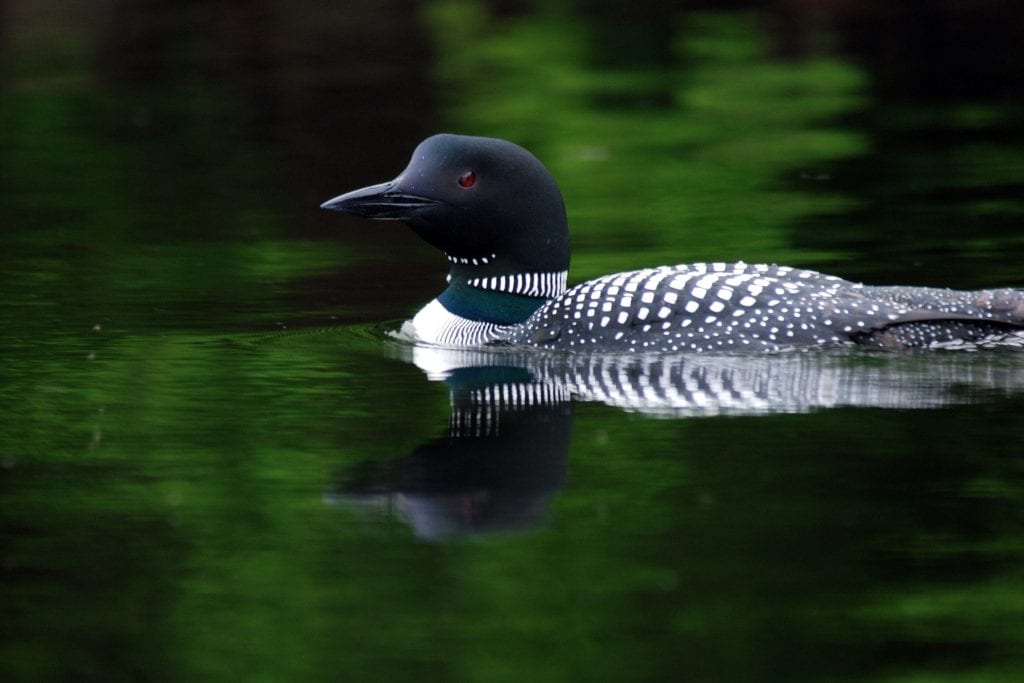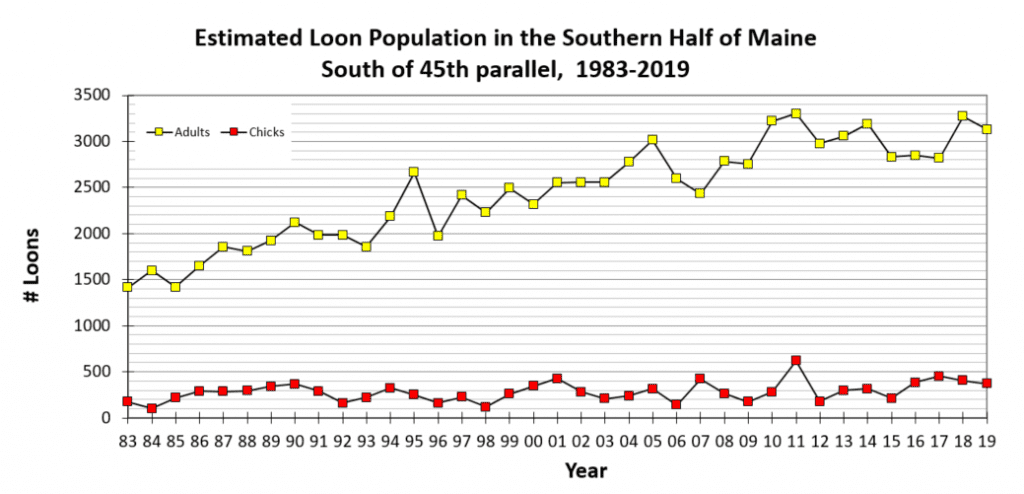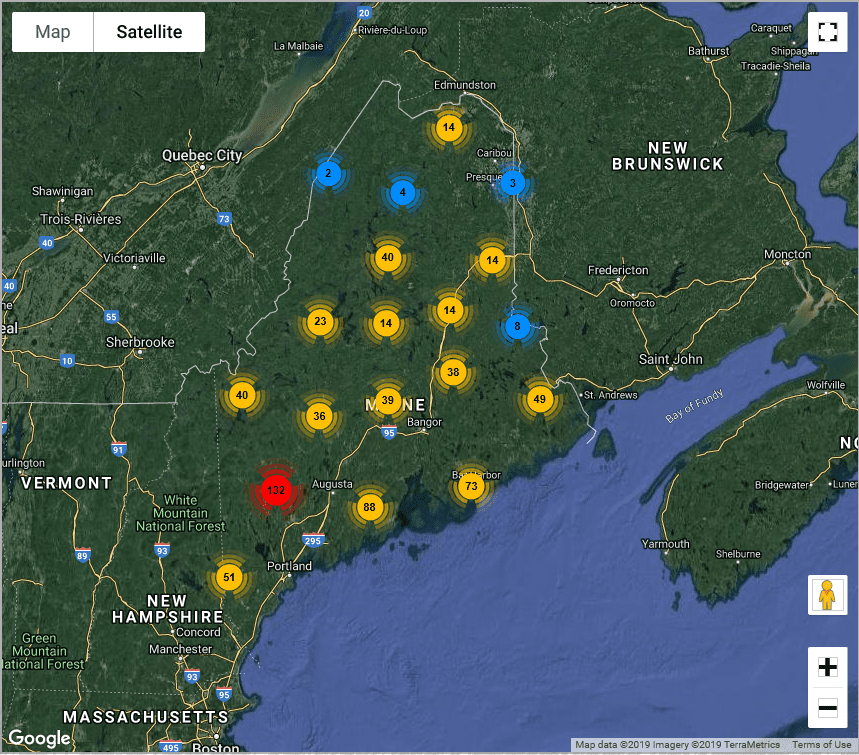
For the 36th year in a row, community scientists all over Maine ventured onto their local lakes and ponds on the third Saturday in July this year to count Common Loons. In total, 1, 414 people participated in the count this year (up from 1,350 in 2018), covering 292 lakes.
Click here to see images, video, and headlines from the 2019 Loon Count.
Let’s see how we did. In the southern half of Maine, including all areas south of the 45th parallel, we estimate the 2019 loon population to include:
Total Number of Adult Loons: 3,129
Total Number of Chicks: 372
How does this compare to past years?
Here’s how Maine’s Common Loon population has changed since the beginning of our count:

Though there was a bit of a dip in the estimated population since 2018, this year’s estimates for adult loons are still above the population estimates for 2015-17, and estimates for both chicks and adults are in line with the rest of the decade. We’ll continue to watch for trends, but the loon population in Maine appears to be healthy and holding steady.
A number of factors may have influenced this year’s findings. Most impactful may have been heavy spring rains which flooded some nests and caused egg loss. (Common Loons can’t walk very well on land and so build their nests very close to the water’s edge, making nests susceptible to flooding from high water or boat wake.) Some loon counters also reported loons abandoning nests due to high concentrations of black flies in the early season, as well as more predation from Bald Eagles and other wildlife. New this year, we received a number of calls reporting concerns about “wake boats,” which kick up a large enough wake for someone to surf behind the boat. Several callers believed that even operating outside the 200′ no-wake zone, the wakes generated by these new boats could wash eggs out of nests when they reach shore.
These factors highlight some of the challenges that loons face in Maine and other states. Yet, even in the face of these threats, loon populations have increased markedly since the count began over three decades ago. The no-wake law, requiring speeds that don’t generate wakes within 200′ of shore, was enacted to prevent shoreline erosion, but has benefited loons by reducing the number of nests flooded by boat wakes. Phased-in bans on types of lead fishing tackle are also addressing lead poisoning in adult loons, one of the leading causes of mortality. Our annual loon counters also serve as the eyes and ears for loons out on their lakes and have taken important steps to protect loons and spread the word locally about what Maine residents can do to help loons in their area.

Can I See Population Trends on my Local Lake?
Yes! Historical Loon Count data can be sorted on this interactive map hosted by the Lake Stewards of Maine. Click the image below to visit the map. Data from the 2019 Loon Count will be reflected on the map in Jan. 2020. You can also download count data for all lakes here.
A New Loon in Charge
Maine Audubon’s Loon Count was managed for many years by biologist Susan Gallo. When Susan left in 2018 to become the Executive Director of the Maine Lakes Society, Maine Audubon hired wildlife ecologist Tracy Hart to take over. Tracy rose to the challenge in her first year at the helm, which included overseeing the transition from paper forms to a digital portal. We’re grateful for all of Tracy’s work this year, and know that she’s looking forward to using what she’s learned to make future counts run even more smoothly.

Want to Get Involved?
Maine Audubon is always looking for more volunteers to help us count loons on the third Saturday of July, from 7:00 to 7:30 am. If you’re interested in learning about how you can help, or have other questions about our work to protect the Common Loon, visit our Maine Loon Project page or contact us at conserve@maineaudubon.org or call 207-781-2330 ext. 219.
History of the Loon Count
The Common Loon is an iconic bird in Maine, but Maine Audubon realized in the early 1980s that we didn’t know much about how their population was doing. Was it growing or shrinking? Where were they breeding? What threats were there? We assembled volunteers from all over the state to visit their local lake or pond for a single dedicated half-hour in July to count all the adult and young Common Loons as they could find, and send us their numbers. Maine Audubon biologists use the data to estimate the number of loons in the southern half of Maine (though some northern Maine lakes are counted, but not enough to give us a reliable population estimate).
Maine Audubon would like to extend an enormous thank you to the regional coordinators of the loon count and to all of the volunteers who helped with the 2019 count and data entry.

